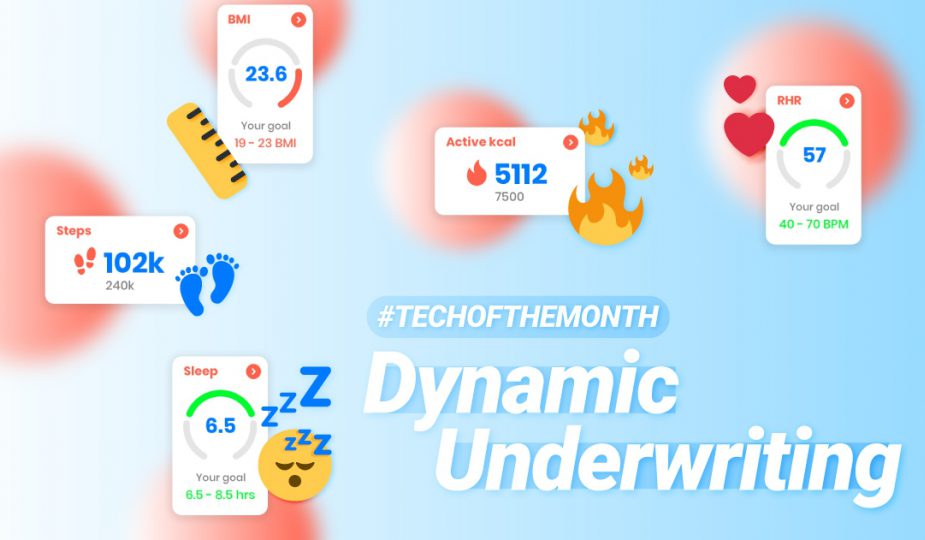What is dynamic underwriting?

We all know physical activity is good for our health. Even if we're not Olympic athletes. But did you know tracking it could be used to predict mortality? Let's look at the science behind dynamic underwriting.
Taking into account dynamic life parameters
Most insurers assess a customer's risk once—at the underwriting stage. But, how do we take into account changing lifestyles or behaviours? What we eat, how much we sleep and our exercise habits can significantly affect our life expectancy.
-
90% accurate at predicting risks with dynamic underwriting
Tracking and understanding the body better
Technology enables new ways to connect to customers and we can leverage on new streams of data to better assess risks. That's where dynamic underwriting comes in. Through smartphones and wearable devices (think Garmin or Apple Watch), we can take data like steps, sleep hours, active calories, resting heart rate, etc. and use it to predict mortality risk. It can be up to 90% accurate at doing so—even more than traditional underwriting metrics. And it's continuously updated.
BAM™️: a solution for the future of insurance
SCOR developed an algorithm, the Biological Age Model BAM™️, that does exactly this. It's also the brains behind our health & activity tracking app, Good Life. The idea is a win:win: insurers nurture a healthier, high-return portfolio that also has a positive impact on people's morbidity and mortality risks.